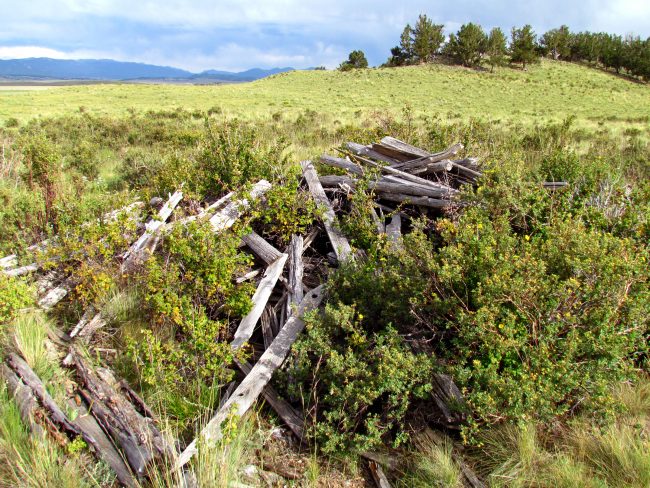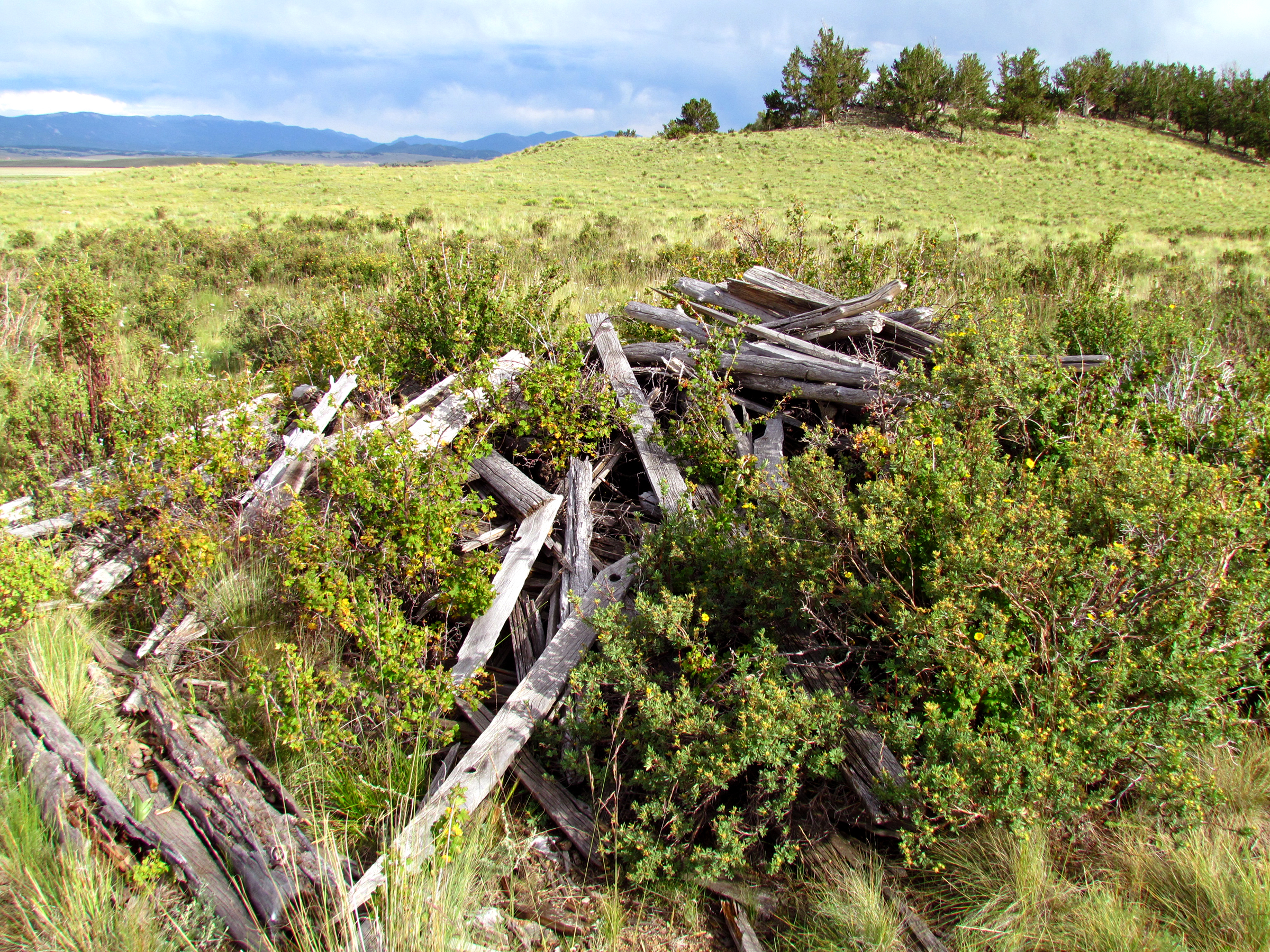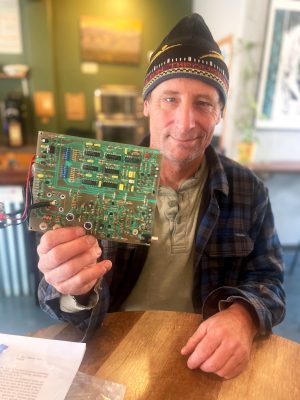FOR FOUR YEARS, 1859-62, the hotspot of mining activity in South Park was at Tarryall City and Hamilton, situated a half mile apart on opposite banks of Tarryall Creek, 2 miles north of present-day Como.
In the summer of 1859, a group of miners whose luck had run out at Gregory Diggings (Central City), including William J. Holman and Earl Hamilton, took off across the mountains looking for another strike, stopping at several streams to try their luck. On July 19, they wound up by an unnamed stream in South Park that they originally named Pound’s Diggings after a prospector in the group, Daniel Pound.
They were tired upon arriving, and one exhausted member of the group looked around and said, “Let’s tarry here.”
“Yes,” said another of the men, “We’ll tarry all.” And thus, the name was born.
At first, they didn’t know they had reached their destination, but as it turned out, gold was rich in that little creek. The Sept. 22, 1859, Rocky Mountain News reported, “The specimens of gold brought from there are as good as any yet discovered.”
A Mr. Campbell, an early gold seeker, said, “It is in scales nearly as large as watermelon seeds, smooth, and very bright yellow, worth from 25 cents to $1.30 each,” when describing the gold in Tarryall Creek.
Statements like those, along with the fact that the name Pound’s Diggings was misinterpreted to mean each miner would easily find a pound of gold, brought the rush to the north end of South Park. Holman founded a town on one side of the creek and called it Tarryall City; Hamilton, on the opposite bank, was founded by Earl Hamilton.
As news spread about the good color being panned on Tarryall Creek, many prospectors arrived daily at the Diggings. As the banks of the creek filled with prospectors, some arrived too late. When it was discovered that all the land had been claimed, later arrivals dubbed the area “Grab-all” and continued south to the confluence of the middle fork of the South Platte River at Beaver Creek, where they found gold and named their diggings Fair Play (now Fairplay).

Once news of the rich gold discovery was out, it didn’t take long before Tarryall Creek was overrun with miners. From 150 miners in the spring of 1859, the population increased to about 6,000 at its highest level by the autumn of 1862. Miners were a transient group; attesting to this was the more than 20,000 names recorded at the Hamilton Post Office through the years. Shouts of men finding prized gold nuggets, or from revelers at the numerous drinking establishments, permeated the formerly quiet Ute hunting grounds.
The towns were often mentioned in early newspaper and magazine accounts, usually lumped together under the name Tarryall Diggings. At its peak, the Diggings boasted 300 log homes and four hotels — Illinois House, Kentucky House, Dunbar House and the star of them all, St. Vrain Hotel. It served the finest cuisine and was the venue for balls attended by the socially elite of Hamilton, Tarryall and Breckenridge.
Included among the businesses was a theater hosting traveling shows, tri-weekly stagecoach service, a drug store, a Methodist church overseen by preacher William Howbert, six groceries, a meat market, two doctors, a sawmill, an attorney, and a justice of the peace. Each town had a post office and there were three express companies that could mail packages to the miners’ homes back East “in the States,” and deposit pouches of gold at Denver banks.
There were several saloons and gambling houses, including a large one in Hamilton with 20 tables hosting games of chance. Not wanting any miner to be thirsty, those down on their luck could pan enough gold from a shared placer called the Whiskey Hole to pay the price of a drink at any of the area saloons.
A newspaper, the Miner’s Record, printed eleven issues in 1861 before closing. It was started by William N. Byers, founder of the Rocky Mountain News. The St. Vrain & Easterdy wholesale store imported up to 50 large bags of flour regularly, each arriving in town strapped to the back of a burro. The streets were narrow and ran parallel to the creek. There were no sidewalks and the streets were frequently dusty, muddy or packed with snow, so for convenience, townspeople would often ride up to the door of an establishment and conduct their business on horseback.
Back when it was legal to start up your own mint and stamp coins from raw gold, John Parsons did just that in an area upstream from the mining towns. For a few months in 1861, he made $2.50 and $5 gold coins, stamped with the words “Pikes Peak Gold” with his surname. Today, those coins are rare and pricey. Only five of the $5 coins and six of the $2.50 coins are known to exist. Their auction records are $100,000 and $85,000, respectively, both from 1979 auctions.
When Park County was named one of the original 17 counties of Colorado Territory in February 1861, Tarryall City was named the first Park County seat. That distinction was lost two months later when the seat was moved to Buckskin Joe near Alma. In 1867, the seat was moved to its present site of Fairplay.
It is estimated that a total of about $2 million in 1860s gold value was removed from the Tarryall Diggings over the years. In 1860, the price of gold was $20.67 per ounce, making the mined weight 96,759 ounces, or just over 6,000 pounds. On Feb. 5, 2023, the price of gold was $1,899.90 per ounce, making the dollar amount taken from the Tarryall Diggings worth $183.8 million in today’s economy.
Hamilton and Tarryall City began their decline toward the end of 1861, and by 1867 the towns were virtually deserted. Today, there is no trace of either. When Como came into existence as a railroad hub in 1879, many remaining structures were moved there. What was left is covered by large piles of tailings kicked up from dredging operations in the 1940s.
This tale is a salute to the miners of Tarryall Diggings. Whether they made a fortune, squeaked by, or went completely broke, they all earned bragging rights to an adventure that we can only imagine. ?
Laura Van Dusen spends considerable time imagining what life was like in the gold rush era. She is inspired when visiting the places where it all began.



